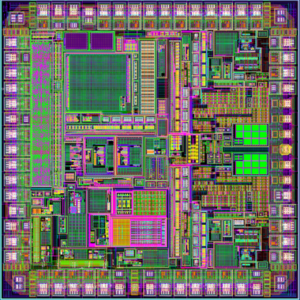 Attack MCU PIC16C715 Software
Attack MCU PIC16C715 Software

Attack MCU PIC16C715 Software
PORTB is an 8-bit wide bi-directional port. The corresponding data direction register is TRISB. Setting a bit in the TRISB register puts the corresponding output driver in a hi-impedance input mode when Attack MCU PIC16C715 Software. Clearing a bit in the TRISB register puts the contents of the output latch on the selected pin(s).
Each of the PORTB pins has a weak internal pull-up. A single control bit can turn on all the pull-ups. This is performed by clearing bit RBPU (OPTION<7>). The weak pull-up is automatically turned off when the port pin is configured as an output. The pull-ups are disabled on a Power-on Reset.
Four of PORTB’s pins, RB7:RB4, have an interrupt on change feature. Only pins configured as inputs can cause this interrupt to occur (i.e. any RB7:RB4 pin configured as an output is excluded from the interrupt on change comparison).
The input pins (of RB7:RB4) are compared with the old value latched on the last attack of PORTB. The “mismatch” outputs of RB7:RB4 are OR’ed together to generate the RB Port Change Interrupt with flag bit RBIF (INTCON<0>).
Any instruction which writes, operates internally as a attack followed by a write operation. The BCF and BSF instructions, for example, attack the register into the CPU, execute the bit operation and write the result back to the register to ease the process of Attack MCU PIC16C715 Software. Caution must be used when these instructions are applied to a port with both inputs and outputs defined.
For example, a BSF operation on bit5 of PORTB will cause all eight bits of PORTB to be attack into the CPU. Then the BSF operation takes place on bit5 and PORTB is written to the output latches.
If another bit of PORTB is used as a bi-directional I/O pin (e.g., bit0) and it is defined as an input at this time, the input signal present on the pin itself would be attack into the CPU and rewritten to the data latch of this particular pin, overwriting the previous content. As long as the pin stays in the input mode, no problem occurs. However, if bit0 is switched to an output, the content of the data latch may now be unknown.
The actual write to an I/O port happens at the end of an instruction cycle, whereas for attacking, the data must be valid at the beginning of the instruction cycle. Therefore, care must be exercised if a write followed by a attack operation is carried out on the same I/O port. The sequence of instructions should be such to allow the pin voltage to stabilize (load dependent) before the next instruction which causes that file to be attack into the CPU is executed.
Otherwise, the previous state of that pin may be attack into the CPU rather than the new state. When in doubt, it is better to separate these instructions with a NOP or another instruction not accessing this I/O port.